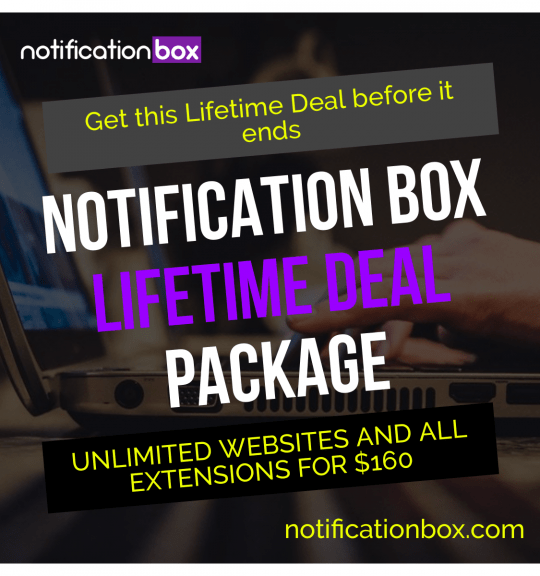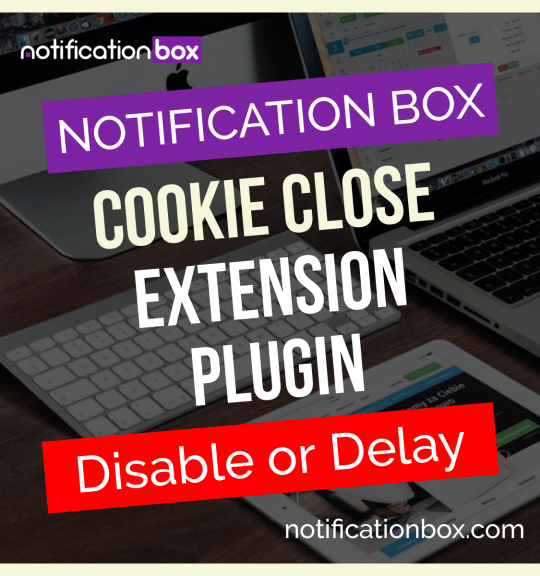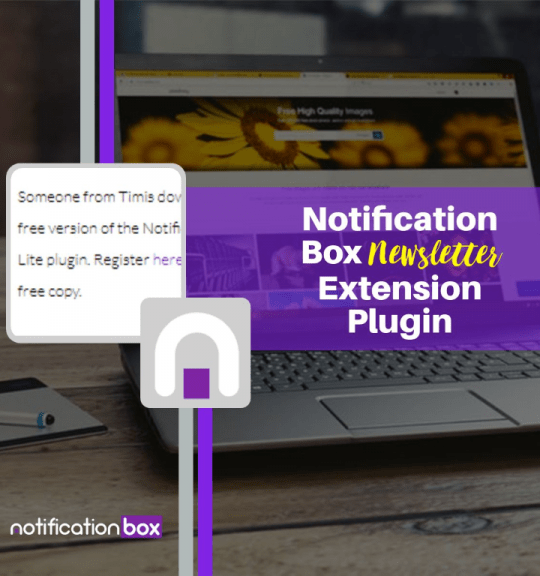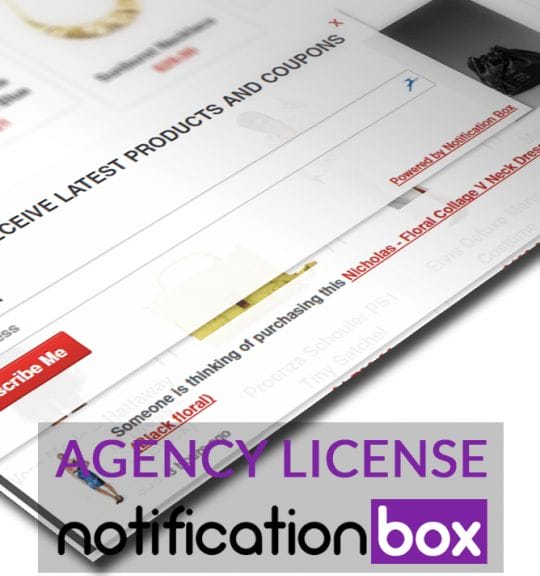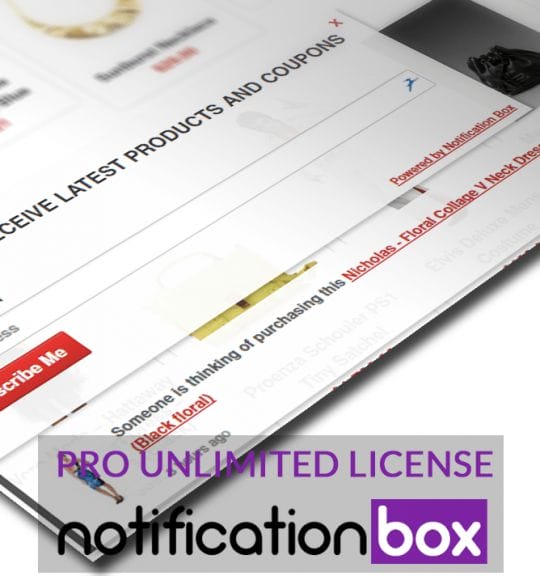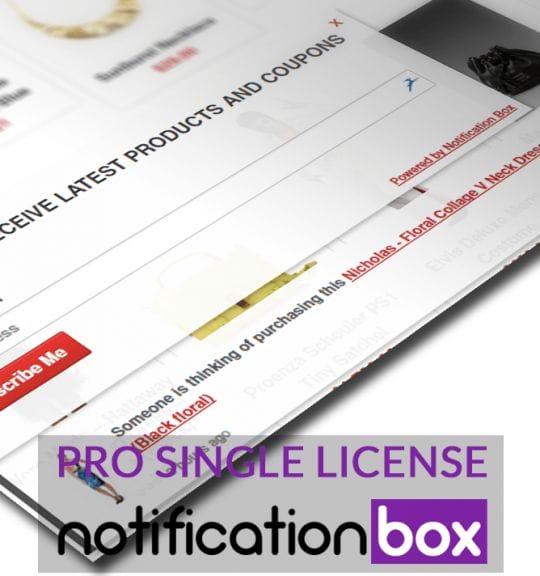Blog
Maximizing WordPress Notification Box Effectiveness
A Comprehensive Guide to the Art of Notification Boxes As I explore the realm of website design and user engagement, I discover that notification boxes are essential for improving user experience. These understated yet effective components are meant to draw in visitors and deliver key messages. Notification boxes are an efficient way to interact with users without being overbearing, whether you’re promoting newsletter sign-ups, offering updates, or announcing a sale.
Key Takeaways
- Notification boxes are used to grab the attention of website visitors and convey important information or calls to action.
- When choosing a notification box plugin, consider factors such as customization options, compatibility with your website, and user-friendliness.
- Effective notification box content should be clear, concise, and visually appealing to encourage user engagement.
- Positioning notification boxes strategically on your website can maximize their impact and visibility to visitors.
- Including call-to-action buttons in notification boxes can prompt users to take specific actions, such as signing up for a newsletter or making a purchase.
Making sure that users are aware of important details that could improve their interaction with the website is their main goal. Also, notification boxes can be used as a tool to increase conversions. I can direct visitors to desired actions, like buying something or signing up for a service, by carefully positioning these boxes on my website. These boxes work well because they provide timely & pertinent information, which has a big impact on user behavior. To use notification boxes to make a website more interesting and useful, you must first understand their purpose. I am aware that the number of options available can be daunting when choosing a notification box plugin.
Numerous plugins are available, and each one has unique features and capabilities. I start by thinking about my individual needs and objectives in order to make an informed decision. For example, if I want to make a straightforward announcement bar, I might choose a lightweight plugin that only does that. However, a more reliable solution would be required if I were searching for more sophisticated options, such as analytics integration or A/B testing.
In addition, I carefully consider user ratings & reviews when assessing various plugins. These comments can offer insightful information about each option’s dependability & functionality. Another crucial consideration is compatibility with my current website platform; I want to make sure the plugin works and looks great with my site. In the end, selecting the best notification box plugin involves striking a balance between functionality, usability, and alignment with my overall website strategy. The next step after deciding on a good plugin is to create engaging content for my notification boxes.
| Metrics | Data |
|---|---|
| Notification Box Placement | Top of the page, bottom of the page, or floating |
| Click-through Rate (CTR) | Percentage of users who click on the notification box |
| Message Clarity | Clear and concise wording of the notification message |
| Visual Appeal | Attractive design and color scheme of the notification box |
| Timing | When the notification box appears (e.g., immediately, after a few seconds) |
It is critical that the message I choose to deliver be engaging, succinct, and clear. I usually begin by determining the most important information I wish to convey, then condensing it into a few powerful sentences. Motivating users to perform the desired action can also be achieved by using language that is action-oriented. Instead of just writing “New Sale,” for instance, I might write “Get 20% Off Your Next Purchase – Limited Time Only!” In addition to the text, I also take into account the notification box’s visual layout.
The colors, typefaces, & general design should complement the style of my website while still being distinctive enough to draw in visitors.
Adding icons or pictures can also improve the message & give it a more appealing appearance. Effective notification box content ultimately creates an engaging user experience by fusing powerful messaging with careful design. Another important element that affects the efficacy of my website’s notification boxes is their placement.
After all, if people don’t see the box, even the best-designed one with engaging content won’t accomplish its objectives. The parts of my website with the highest traffic are usually where I think people will notice the notification box the most. Typical locations are inside the content as users scroll down or at the top of the page as a sticky header. I also try out various placements to see what my audience responds to the best.
A notification box at the bottom of a blog post, for example, can motivate readers to act after they’ve interacted with my material. Also, I make sure that my notification boxes are responsive and positioned correctly on all devices because I recognize that mobile users may have different preferences when it comes to placement. I can increase my notification boxes’ visibility and impact by placing them strategically. To increase user engagement, call-to-action (CTA) buttons must be included in my notification boxes. The possibility that users will act after viewing my notification box can be greatly increased with a well-written call to action.
I make sure these buttons complement my overall branding while also making them visually stand out from the rest of the content. Action-oriented words and phrases, such as “Shop Now,” “Sign Up Today,” or “Learn More,” can compel users to click by generating a sense of urgency. I also think about the CTA button’s dimensions and positioning inside the notification box.
It should not be so big as to obscure the message itself, but just big enough to be clickable. I also frequently experiment with different CTA button designs and wording to determine which ones my audience responds to the best. I can help users take significant actions that will benefit my website and themselves by skillfully integrating CTA buttons into my notification boxes.
In order to provide a seamless user experience throughout my website, brand consistency is essential, and this also applies to my notification boxes. My brand’s identity is reflected in these boxes, which helps visitors recognize & trust me. In order to ensure a smooth transition between various site elements, I begin by making sure the notification box’s colors match my brand palette. Apart from color palettes, I also take note of the notification boxes’ typography and imagery. Employing typefaces that complement the aesthetic of my brand improves readability & preserves consistency.
Adding brand icons or logos can also give a personalized touch that appeals to users. I improve my notification boxes’ aesthetic appeal and fortify my overall brand identity by personalizing them to reflect my branding. My notification boxes work best when I use A/B testing, which is a really useful technique. Creating two different versions of a notification box, with different headlines, colors, or CTA buttons, allows me to compare how well each version performs & identify which version my audience responds to the most. I can decide what engages users the best thanks to this data-driven approach.
Before making decisions, I usually conduct A/B testing over a predetermined amount of time to collect enough data. Understanding how each variation performs in actual situations is made easier for me by analyzing metrics like click-through and conversion rates. With the help of these insights, I can gradually improve the efficacy of my notification box tactics and make sure they suit user preferences. An additional efficient strategy to improve user engagement on my website is to incorporate notification boxes into my email marketing campaigns. If I’m using email marketing to run a special promotion or event, for example, I can use a notification box on my website to remind people about it.
Users who might have received an email but haven’t acted on it yet will have a seamless experience thanks to this. Also, I frequently use notification boxes on my website to promote newsletter sign-ups. I can persuade visitors to join my email list while they are already on my site by emphasizing the advantages of subscribing, such as special offers or insightful content. In addition to increasing email sign-ups, this integration aids in preserving consistent messaging across all platforms. Monitoring and evaluating the performance of my notification boxes is crucial to making sure they are accomplishing their stated objectives. The majority of plugins have analytics capabilities that let me keep an eye on important data like impressions, clicks, and conversions.
I can learn more about how well each notification box is operating & pinpoint areas for development by routinely analyzing this data. For every notification box, I also establish clear objectives according to its function, such as boosting newsletter sign-ups or sales during a promotion. By comparing performance to these objectives, I can determine whether my tactics are working or if they require modification. By keeping me updated on user preferences and behavior, this continuous analysis enables me to maximize the impact of my notification boxes.
It’s critical to optimize my notification boxes for mobile users, as more & more people are visiting websites through mobile devices. It’s crucial to make sure my notification boxes are responsive and simple to use on smaller screens because mobile screens have limited real estate. Simplifying the content & making sure the CTA buttons are big enough to tap easily are common ways to achieve this. I also take into account the fact that mobile users interact with notifications in a different way than desktop users; they might favor notifications that don’t interfere with their browsing. For this reason, I frequently experiment with banners or slide-in notifications that don’t take up a lot of room but still successfully convey crucial messages. I can make sure that every visitor has a satisfying experience on my website by giving mobile optimization top priority.
Ultimately, the secret to optimizing their efficacy is putting in place a plan for sending pertinent and timely notifications. By coordinating notifications with current affairs or promotions that appeal to my audience’s interests, I try to make sure that the messages delivered through my notification boxes are timely & pertinent. For example, I make sure to mention in my notifications well in advance any impending holiday sales or events that are pertinent to my target audience. I can also spot patterns in user behavior by employing data analytics, which enables me to customize notifications according to the things users are presently interested in or searching for on my website.
I can successfully increase user engagement and boost conversions by concentrating on timely and pertinent notifications. To sum up, becoming an expert at notification boxes requires knowing why they are used, selecting the appropriate resources, creating engaging content, and constantly refining tactics in light of user preferences and behavior. These guidelines will help me design notification boxes that effectively engage and inform website visitors.
If you are looking for the best practices for implementing notification boxes on your WordPress website, you may want to check out the article on notificationbox.
com/notification-box-lite-live-on-wordpress-plugin-directory/’>Notification Box Lite now live on WordPress Plugin Directory. This article discusses the features and benefits of using the Notification Box Lite plugin for WordPress, which can help you effectively communicate with your website visitors.
FAQs
What are WordPress notification boxes?
WordPress notification boxes are small pop-up messages or alerts that appear on a website to inform users about important information, updates, or actions they need to take.
What are the best practices for using WordPress notification boxes?
– Keep the message clear and concise
– Use eye-catching colors and design to grab attention
– Place the notification box in a prominent location on the website
– Use notifications sparingly to avoid overwhelming users
– Ensure the notification is relevant and timely
– Provide a clear call to action if necessary
How can WordPress notification boxes improve user experience?
WordPress notification boxes can improve user experience by providing important information or updates in a visible and easily accessible manner. They can help guide users to take specific actions or alert them to changes on the website.
What are some common uses for WordPress notification boxes?
– Announcing new features or updates
– Notifying users of scheduled maintenance or downtime
– Alerting users to important deadlines or events
– Promoting special offers or discounts
– Requesting user feedback or surveys
BUY NOW
-
Sale!

Agency License – Notification Box – WordPress Plugin
Original price was: $230.00.$150.00Current price is: $150.00. Add to cart -
Sale!

Unlimited License – Notification Box Pro – WordPress Plugin
Original price was: $79.00.$60.00Current price is: $60.00. Add to cart -

Single License – Notification Box Pro – WordPress Plugin
$39.00 Add to cart


